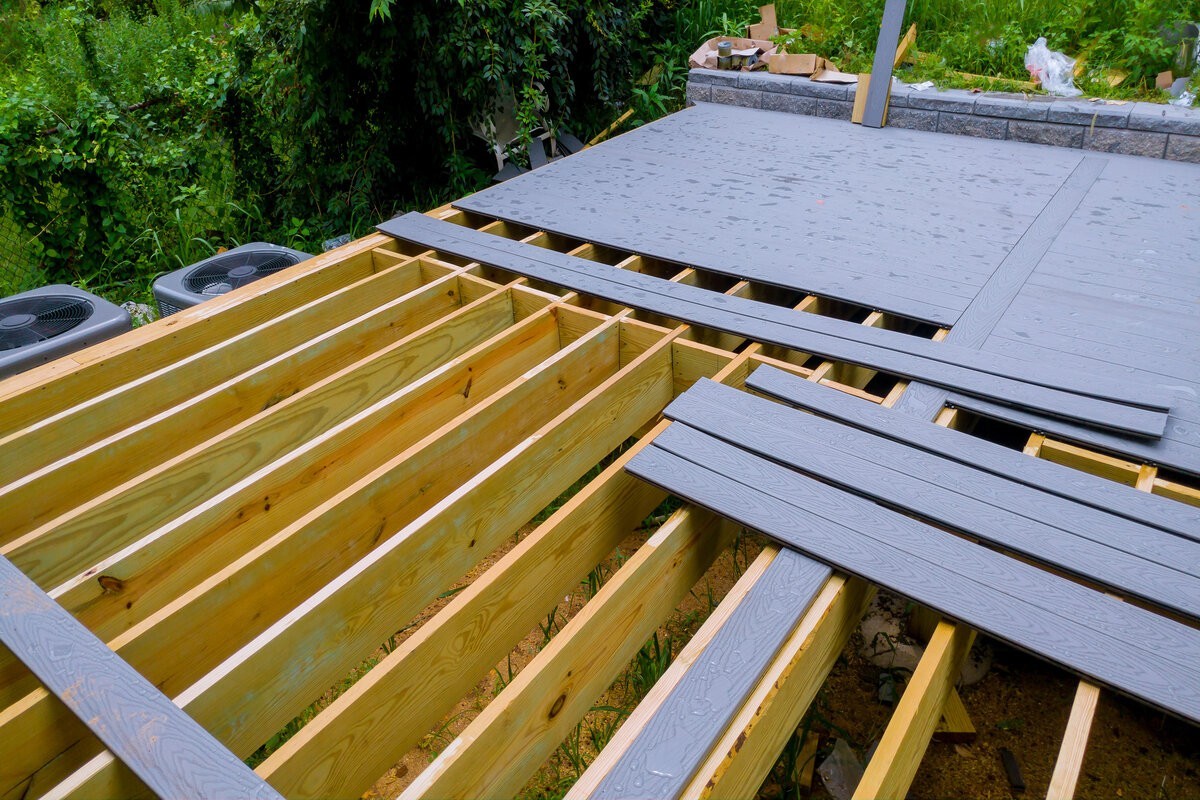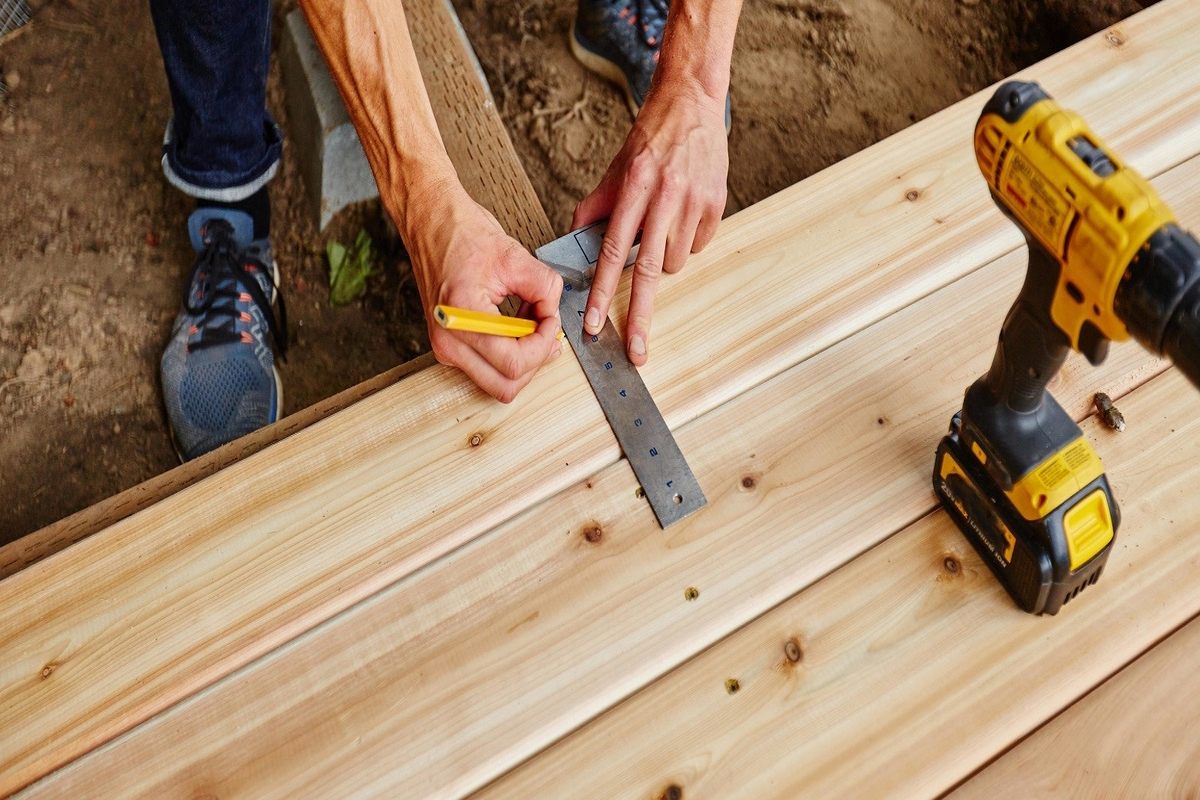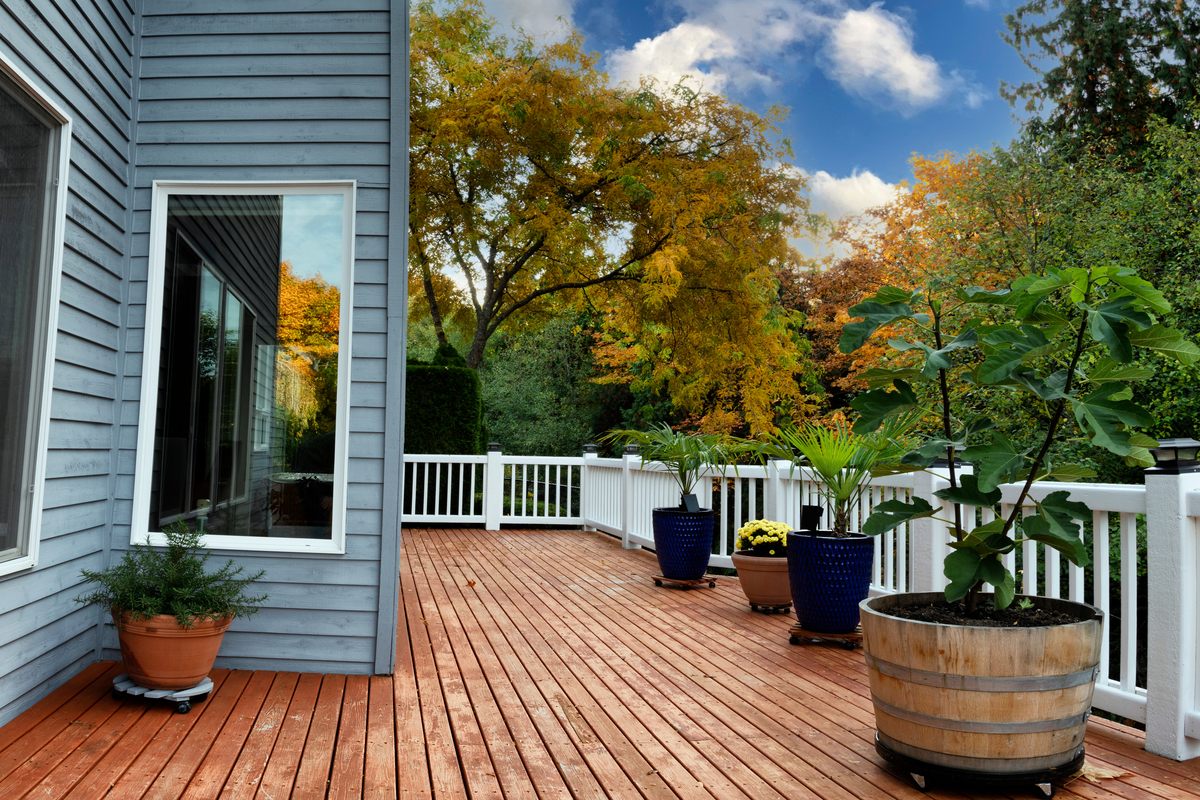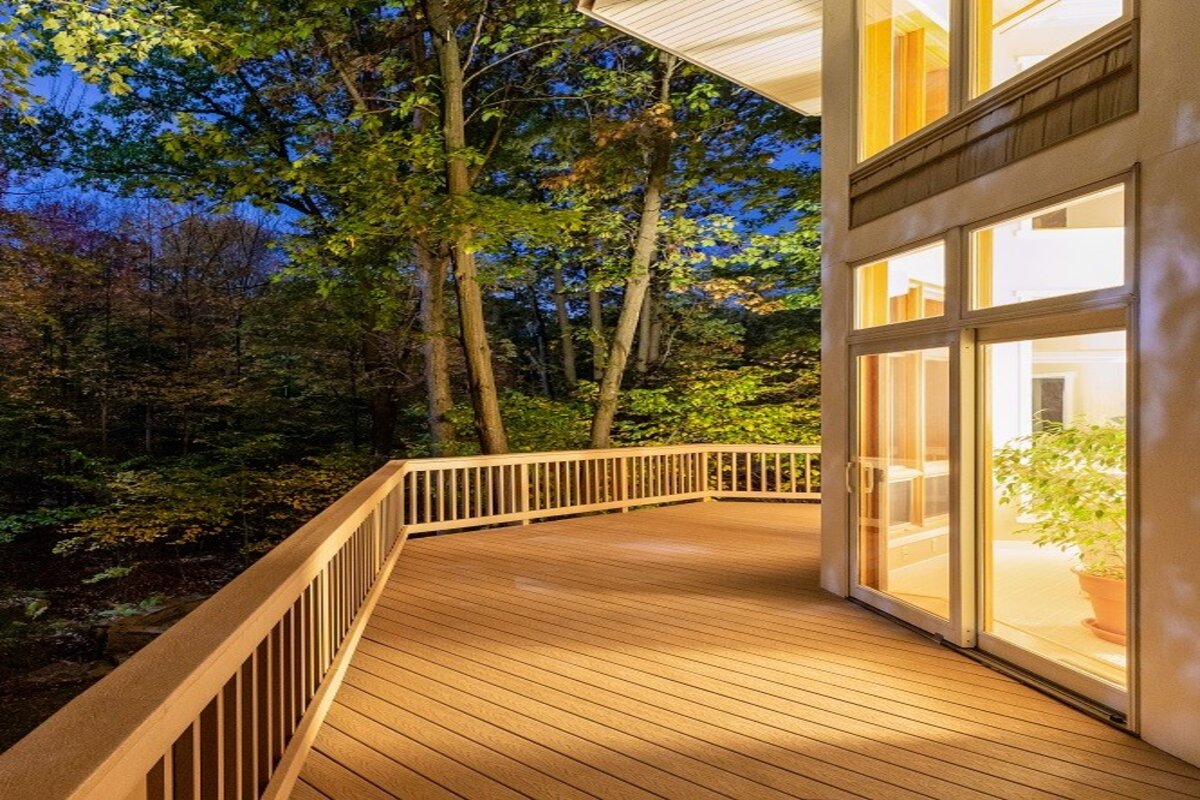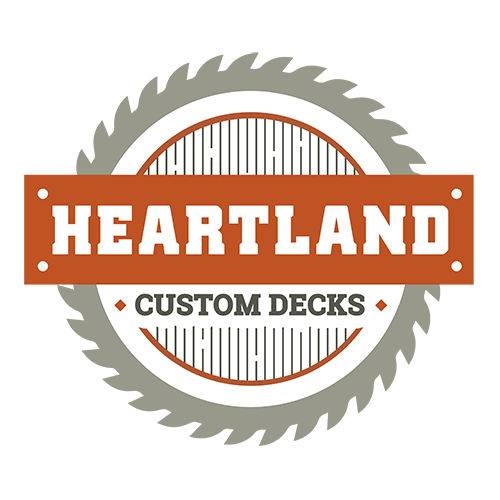What matters more to you: low maintenance or upfront savings? Many Kansas City homeowners face this question when choosing between composite decks and traditional wood. At Heartland Decks, we’ve helped clients on both sides of the decision and have seen how each option holds up over time. This guide breaks down the real differences so you can choose the deck that fits your goals and your budget.
What Are Composite Decks?
Composite decking is created by combining recycled materials—wood fibers, plastics, and bonding agents—which are melted down in a hopper and then pushed through a mold. Before they cool, these boards are brushed with realistic faux wood grain. TimberTech, for example, has done an amazing job making even gray composite boards look just like real wood.
If you’ve ever driven past a deck and had to double take, wondering whether it’s wood or composite—that’s the level of detail we’re talking about. Composite boards have come a long way, and you’d be surprised how natural they look.
What Are Wood Decks?
Wood decks are built using real lumber—typically pressure-treated pine, cedar, or redwood. They have that classic, organic feel, and they’re often the cheapest option right out of the gate. But the story doesn’t end there.
Unlike composite, wood absorbs water easily. Every board exposes its largest surface area to the elements, making it more vulnerable to moisture, staining, warping, and rot. Over time, these issues mean more maintenance and more expense.
Cost Comparison: Upfront vs. Long-Term
1. Initial Price
Wood decks typically come with a lower price tag upfront. This appeals to many homeowners looking for a quick and affordable way to add outdoor living space. Composite decks, while more expensive to install at first, don’t have nearly as large a price gap as you might expect today. And they save you money in the long run.
2. Ongoing Maintenance
This is where the real difference shows up. We like to explain it this way: the money you save by choosing wood will likely be spent in the first 5 years on upkeep. Here’s what you can expect with wood:
- Buying stain, paint, or water treatment products multiple times a year
- Buying sandpaper or sanding tools
- Spending time each year sanding and staining
- Replacing warped or rotted boards over time
With composite decks, like TimberTech, you can skip all that. There’s no staining or sealing needed. Just rinse it down as needed, and you’re good to go.
Durability and Performance in the Elements
1. Moisture Resistance
This is one of the biggest differences between the two.
Wood decks absorb water directly into the surface. When rain or snow hits that 5½ inch-wide board, moisture soaks right in. You’ll need sunlight and airflow under the deck to dry it out properly—otherwise, mold and rot set in fast.
Composite boards are plastic-capped on all sides, which means water just beads up and drains or rolls off. Even on rainy days, it’s not soaking into the material—just sliding across a sealed surface.
2. Lifespan
Wood decks can last if you’re consistent with maintenance—but it takes work.
Composite decks, especially from brands like TimberTech, come with 25-, 30-, and even 50-year warranties. From what we’ve seen in the field, these boards absolutely live up to those warranties—if not longer.
Looks That Last
Composite decks today are not what they used to be. The industry has made huge strides. That natural-looking texture is brushed into the material before it cools, giving it a real-wood appearance that’s surprisingly hard to tell apart from the real thing.
We’ve had clients tell us they had to stop their car to check out a neighbor’s deck—“Is that real wood or composite?” The attention to detail on color and grain is that good.
Wood is beautiful too, and it has its charm. But if you’re aiming for a consistently clean, long-lasting aesthetic that won’t fade or splinter, composite is the smarter choice.
Which Deck is Right for You?
We understand that every homeowner’s situation is different, and we’ll work with your goals and budget. But based on what we see every day, here’s a quick breakdown:
Choose wood decking if:
- You need the lowest upfront cost.
- You’re okay with yearly upkeep.
- You like the look of aging natural wood.
Choose composite decking if:
- You want long-term durability and performance.
- You prefer a deck that’s easy to maintain.
- You want a product that looks like wood without the maintenance.
In Summary
The price difference between wood and composite decks is not as big as it used to be—and composite decks pay off fast in savings, durability, and time. You’ll skip the annual trips to the hardware store for stain and sandpaper, and your deck will look just as good 10 years from now as it did the day we built it.
If you’re thinking about a composite deck, we’re here to help. At Heartland Decks, we specialize in building beautiful, long-lasting outdoor spaces that fit your style and budget. Contact us today to get started on your dream deck.


